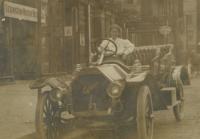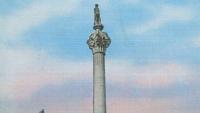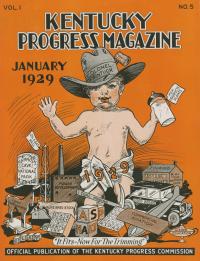

Website Search

Read the latest issues of your favorite magazines on your computer or mobile device.
Compiled by Cyrus Parker Jones, a man formerly enslaved by the Parker family, these funeral notices cover 667 funerals of individuals in Lexington, including seven free blacks. The funeral notices cover the years 1806-1886. Jones donated his collection to a trustee of the Lexington Public Library prior to his death in 1887, who then added some notices and donated the collection to the Lexington Public Library in 1900.
Letters to and from Father William T. Punch (1874-1933). Father Punch was instrumental in building the 3rd St. Peter Catholic Church on Barr Street in Lexington, KY.
The 1906-07 Lexington cross directory contains residential and business information for the city, arranged both alphabetically and by street, with a business listing by category. It also contains city officials and departments, and basic historical and landmark information. The advertising section is printed on yellow paper.
The city report covers the outline of a citizen participation work plan and its connection with neighborhood groups, as well as the results of those meetings and community concerns that took place throughout 1969. It contains neighborhood maps, images of news articles, and and project methodology.
This half of the record book contains burial records for St. Paul Catholic Church parishioners.
This letter collection was collected by Judge Kenneth Lyons. The earliest date of the letters is 1862, from Bourbon and Nicholas Counties, Kentucky. Some letters are fragments.
The diary (ca. 1899) of Katherine Pettit, details her settlement work for the Kentucky Confederation of Women's Clubs, made yearly trips to Hazard during this period and was a central figure in establishing the Hindman (Kentucky) Settlement School in 1902. Activities described here include teaching, reading, cooking, and hygiene. The diary also includes daily entries (August 3-September 13) detailing Pettit's travel from Lexington and Hazard with fellow settlement workers, her encounters with Hazard and mountain families, and the general scope of her work. Also includes a manuscript map of her camp.
The Kentucky Gazette was the first paper established west of the Allegheny Mountains. The frontier paper focused on East Coast and International news, though some local announcements can be found. Later, the paper focused on disseminating opinions on politics and issues of concern on the frontier. When political parties emerged, the paper developed a Democratic (conservative at the time) bent.
The Lexington Weekly Press was published every Wednesday in Lexington, Kentucky, and contained local, state, and foreign news. The paper focused on Central Kentucky’s “agriculture, manufactures and fine stock”, as well as literary and scientific news, market reports, and serial stories. Local weddings, deaths, community events, and elections for Lexington and the surrounding region. The paper was sent anywhere in the United States at a cost of one dollar per year.
Various Letters to and from Margaret Donaldson found in our Duncan-Goff scrapbook collection.
Scans of the Black Marriage records from the Courthouse in Greenville, Kentucky.
The Reporter was a weekly Republican paper, occasionally semi-weekly when Congress was in session. Continued publication throughout the War of 1812.
This is a handwritten series of lectures detailing Samuel D. McCullough's memories of his childhood and life in Lexington, Kentucky, accompanied by letters and a photograph of his house.
This work contains information about French Emigrants to America over the years 1789-1799, and provides a history of the French Revolution. The work was originally in French, and was translated into English by an anonymous translator using the pen name, "A Lady." Published in 1800 in Lexington, KY
The Kentucky Reporter is the weekly continuation of The Reporter, which changed names in October 1817. It reports on local and national news. 1827 is the only semi-weekly run of this newspaper.
This collection consists of Black community news published under the headline “Colored Churches,” “In Colored Circles,” or “Colored Notes”; and other articles of social interest, including marriages, public events, and obituaries.
The Daily Argonaut began in 1895 and seems to have ceased publication in 1899. This collection includes scattered issues from 1896, 1897 and 1898.
Description coming soon.
Description coming soon.

The Kentucky History collection contains Kentucky-related documents not specifically related to Fayette County.

Fayette County, Kentucky, has changed enormously since it was created in 1792. This collection contains government documents for the city of Lexington, for Fayette County, and for the merged Lexington-Fayette Urban County Government, as well as funeral notices, club directories, scrapbooks, image collections and a history of Lexington Public Library.

The Kentucky Images collection contains postcards, photographs and slides of people, architecture, and locations in Kentucky and Appalachia.

The Publications Collection contains runs of historical Kentucky newspapers, almanacs, and magazines.










